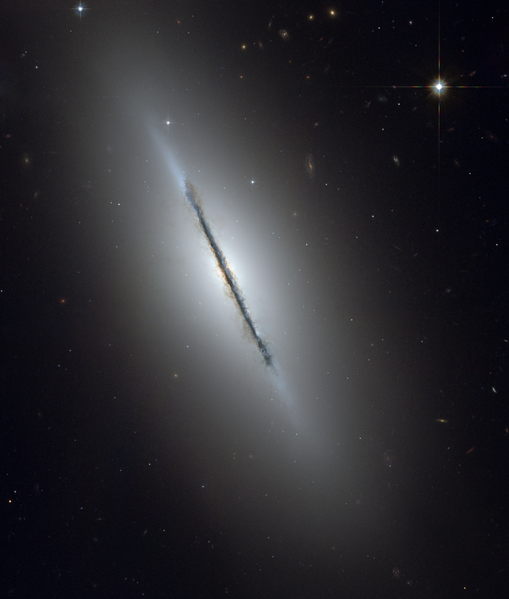Mynd:Ngc5866 hst big.png
Appearance

Stødd av hesi forskoðan: 509 × 599 pixels. Aðrar upploysnir: 204 × 240 pixels | 408 × 480 pixels | 652 × 768 pixels | 870 × 1.024 pixels | 1.739 × 2.048 pixels | 3.190 × 3.756 pixels.
Upprunafíla (3.190 × 3.756 pixel, stødd fílu: 25,78 MB, MIME-slag: image/png)
Søgan hjá fíluni
Trýst á dato/tíð fyri at síggja fíluna, sum hon sá út tá.
| Dagur/Tíð | Lítil mynd | Dimensjónir | Brúkari | Viðmerking | |
|---|---|---|---|---|---|
| streymur | 16. feb 2009 kl. 18:38 |  | 3.190 × 3.756 (25,78 MB) | Spencer | {{Information |Description={{en|1=From original NASA press release: :This is a unique view of the disk galaxy en:NGC 5866 tilted nearly edge-on to our line-of-sight. Hubble's sharp vision reveals a crisp dust lane dividing |
Myndarslóðir
Hesar síður slóða til hesa mynd:
Alheims fílunýtsla
Aðrar wkiir brúka hesa fílu:
- Nýtsla á ab.wikipedia.org
- Nýtsla á ace.wikipedia.org
- Nýtsla á af.wikipedia.org
- Nýtsla á af.wikibooks.org
- Nýtsla á af.wikiquote.org
- Nýtsla á af.wiktionary.org
- Nýtsla á ak.wikipedia.org
- Nýtsla á als.wikipedia.org
- Nýtsla á am.wikipedia.org
- Nýtsla á am.wiktionary.org
- Nýtsla á ang.wikipedia.org
- Nýtsla á ang.wiktionary.org
- Nýtsla á an.wikipedia.org
- Nýtsla á an.wiktionary.org
- Nýtsla á arc.wikipedia.org
- Nýtsla á ar.wikipedia.org
- Nýtsla á ar.wikibooks.org
- Nýtsla á ar.wikinews.org
- Nýtsla á ar.wikiquote.org
- Nýtsla á ar.wikisource.org
- Nýtsla á ar.wikiversity.org
- Nýtsla á ar.wiktionary.org
- Nýtsla á arz.wikipedia.org
- Nýtsla á ast.wikipedia.org
- Nýtsla á ast.wiktionary.org
- Nýtsla á as.wikipedia.org
- Nýtsla á av.wikipedia.org
- Nýtsla á ay.wikipedia.org
- Nýtsla á ay.wiktionary.org
- Nýtsla á az.wikipedia.org
- Nýtsla á az.wikibooks.org
- Nýtsla á az.wikiquote.org
- Nýtsla á az.wikisource.org
- Nýtsla á az.wiktionary.org
- Nýtsla á bat-smg.wikipedia.org
- Nýtsla á ba.wikipedia.org
- Nýtsla á bcl.wikipedia.org
- Nýtsla á be-tarask.wikipedia.org
- Nýtsla á beta.wikiversity.org
- Nýtsla á be.wikipedia.org
Vís meiri globala nýtslu av hesi fílu.
